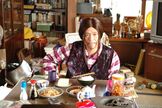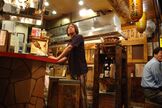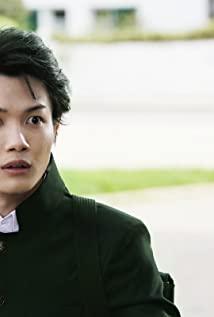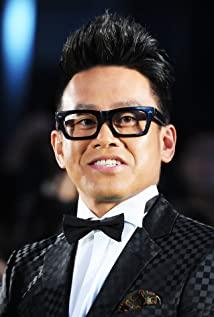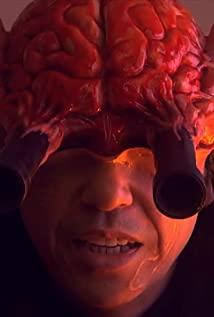The old lady said, big Japanese? Little Japan is about the same. I hurriedly apologized and echoed the words, I wrote it wrong, I wrote it wrong, little Japanese, little Japanese. It was a lot of work to explain the word "big" to the old lady, and I hadn't seen the movie at the time.
After entering this page, I am more firm on the above idea - the explanation of this "big" word, for all those who have not seen this movie, undoubtedly the more the explanation is, the less understandable it is. If you still have the mind to understand, then I try to say it, believe it or not, it is your business.
The "big" here is not referring to the Japanese nation, but the type of person represented by the protagonist in the movie - the "big" person. For example, it is the expression "African American". In order to take care of some people's sensitive nerves, we should translate it as "Japanese big man". Of course, this may also be the original meaning of the movie.
But unfortunately, there are so many Chinese characters in Japanese, and we can always understand them according to the meaning of Chinese. Of course, the general meaning is similar, but the subtleties may be worth scrutinizing. I don't understand Japanese, the above is purely general, but examples can also be cited.
I was looking for Nakakosuke's song a few days ago, and suddenly I heard a song with a very moving melody. I clicked it and found it was called "Toilet Paper". There is a set. Then I listened, and the more I listened, the more I felt that this was not the meaning. After checking it, it turned out that "toilet paper" means "letter" in Japanese. The deviation of the meaning of Japanese characters is evident.
Well, let's talk about this movie.
The film was shot in a documentary style, and it looked as if it was a low-rated program interviewing Sato and the people around him—a technique that interprets "big Japanese" more like a traditional handicraft, like Like all traditional handicrafts, it has been washed away by the modern torrent. Here is a detail, some young people say that it is more efficient to dispatch the Self-Defense Forces against these monsters. Sato said that tradition has its own traditional truth, and it is not good to always overturn it. It's really interesting that this is said by Salted Egg Superman.
There are countless hints to the sunset industry. First, it is the income of the practitioners - 300,000 yen per month, which is converted into 15,000 yuan. In China, this income is very good, but in Japan The price of goods is more expensive, it is probably a lower-middle income, and there is still a mortgage to pay; secondly, the "big Japanese" had to print advertisements on the front and back when fighting; thirdly, his wife and him Divorce because I think Sato's life is useless. Here, if you replace Sato's occupation with a tofu store manager, you won't feel any problem.
Let's go back to Sato's basic occupation, Salted Egg Superman. If there is Superman, there should be monsters, right? The monsters here are very interesting guys. The state was as calm as the owner of the grocery store next door. And every time he received the news that the monster was attacking, Sato always said to the reporter, "I'm sorry to disturb you," and then started the motorcycle slowly, walked slowly to the power plant, and slowly performed a large set of rituals (the old guard said, no The ceremony is also possible, the previous one was much more solemn. When the old man dressed up by the Onmyoji was halfway through the practice, the reporter said, can you always do it again, the Onmyoji asked, where did it come from, there was no tension ) It seems that the monsters will not start destroying until Sato arrives.
Monster logic is very common in Japanese special films. When Ultraman makes a gorgeous transformation, they always have to wait somewhere, stay still, and have professional ethics. Perhaps this is the virtue of the Japanese people, everything has to be done step by step, whether you are an invincible superman or an evil monster.
Monsters, some are reasonable, some are unreasonable, and some are pure troublemakers.
The closed beast, the closed beast's hands are closed, it looks like they are close together, but in fact they grow together. What they like to do is to hug the building, and then turn the building backwards and turn it upside down. This move seems to be a classic wrestling move. This is a very serious guy, doing his job seriously, no matter what Sato does, so he killed Sato with a stick. This guy is bald, has long hair on one side, and supports the center. After every action, he has to shake his hair and then quickly. The prototype is probably a certain boss of the director.
Bouncing beast, the head of the bouncing beast grows on a huge developed leg, this monster is still relatively dedicated, at least it can make gestures with Sato. Unfortunately, with bad luck, my head got stuck between the buildings and I couldn't pick it up.
The staring beast, the eyes of the staring beast are long between the legs, and there is a neck behind the eyes, which is very evil. This guy is completely irrational, and he always falls asleep suddenly without saying anything.
The quarrel between the strange beast, the strange beast and Sato was so helpless that Sato said that it was wrong to get in the way. The strange beast said, what are you doing to me? Then came out the male monster, the two beasts OOXX, Sato is not going, nor is staying. Thinking of laughing makes my stomach hurt.
Tong Beast, Tong Beast is a very philosophical guy, but after all, he just wants to eat milk. As for the accidental fall, which triggered the public's condemnation of Sato, saying that Sato abused children (beasts), Sato had nothing to say. Here I would like to say that this is that the ideology of Europe and the United States has a very strong influence on other countries. I am thinking, if this happened in the era of Sato's grandfather, would it be so big. I think so, somewhat feudal thinking.
In the end, there was the little red devil. Someone brought this monster to China. I was wondering if he had watched a movie. It was already mentioned in the movie that this little devil was from South Korea. The Japanese don't like Korea very much either. The Koreans taught Sato a lesson here, which to a large extent reflects that the monsters in Japan do not advocate violence very much. If possible, be a little more peaceful. The Japanese after World War II were not very ambitious, which is what this film touches on.
As for the later American Salted Egg Superman flying over and hitting the monster, it fully shows that the director's attitude towards the United States is very helpless.
After talking about monsters and Superman, let's talk about Sato himself. Here are thirty-five things the director himself wrote about Sato.
01. The man lives in a house in the capital.
02. The man was less than 40 years old and his name was Dai Sato.
03. The man is being interviewed. He seems to be engaged in some kind of traditional occupation in Japan.
04. This man has long hair and is actually a person who likes to dress up.
05. When the man has something to do, he goes out with a folding umbrella to eat his beloved udon noodles.
06. At some point in the man's house, there was a wild cat whose name is unknown.
07. The man had children's toys and shoes at home, and he didn't look like he was single.
08. The man was not popular with the neighbors.
09. The man wasn't paid much for his work, but he didn't seem to have much before, just like his grandfather.
10. The man had a female agent who liked dogs, had a good income and drove an imported car.
11. The man occasionally travels for business, most of which are Aichi Mikawa and Aomori Hachinohe.
12. The man would sometimes go to the suburbs for three or four days at a time.
13. The man will be depressed when he returns.
14. The man often said "change" was like a technical term.
15. The man doesn't seem to have any friends.
16. This man must go to a karaoke shop whenever he goes to Nagoya.
17. The man occasionally appears on a TV show.
18. The man looked like an elderly grandfather, but the two did not live together.
19. The man did not often bring up his parents, especially his mother.
20. The man's home is very ordinary but has many decorations.
twenty one. The man's friend, Yamashiro, likes to eat big doughnuts.
twenty two. The man and his wife are separated and have several opportunities to see their children each year.
twenty three. When the man is excited, he will go into words.
twenty four. The man has a slight liar and likes to cover his eyes with bangs when he is embarrassed.
25. This man seemed to be fighting someone somewhere, and his face was blue and purple from time to time.
26. Although this man is usually a small man, he will become a big man when he starts working.
27.The man appears to have been abused by his father as a child.
28. The man wanted his son to carry on his career.
29. It is heard that the man is often mocked by those he interviews.
30. This man has a good personality. Although he works hard, he makes many mistakes, which leads to misunderstandings by those around him.
31.The man appeared to be so well-known that tens of thousands of people gathered from all over to ask him to perform.
32.The man also faced cameras at home.
33. The man didn't seem to enjoy his job.
34.The man appears to be favored by others at work.
35.No matter where he went, this man was stupid and lived a bad life.
Is the whole thing a waste man? When I write this, I think of a sentence, happy life is the same, but unfortunate life is very different. However, this story gives us another explanation. The definition of happiness in different countries is very different, but the helplessness of ordinary people is the same.
The story focuses on Sato, an ordinary and useless man.
Just remember that.
View more about Big Man Japan reviews





